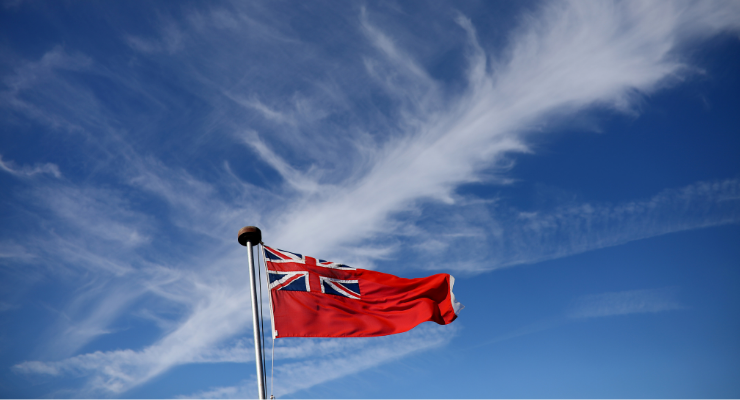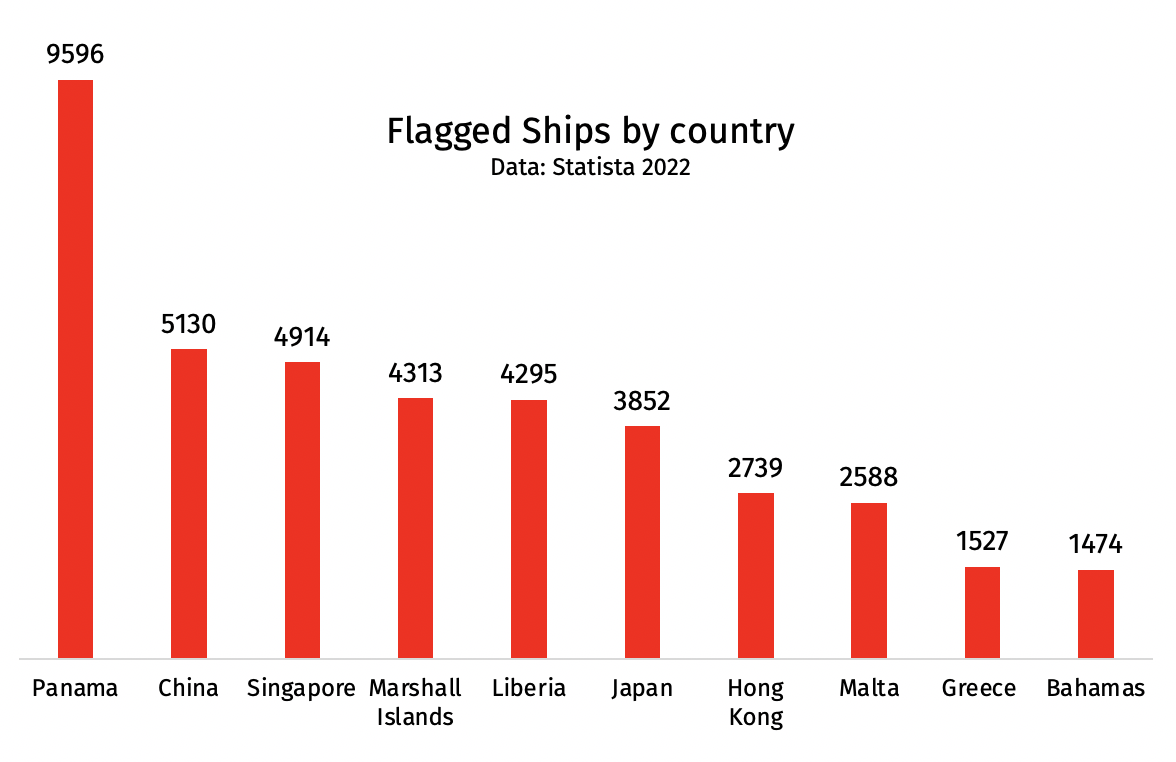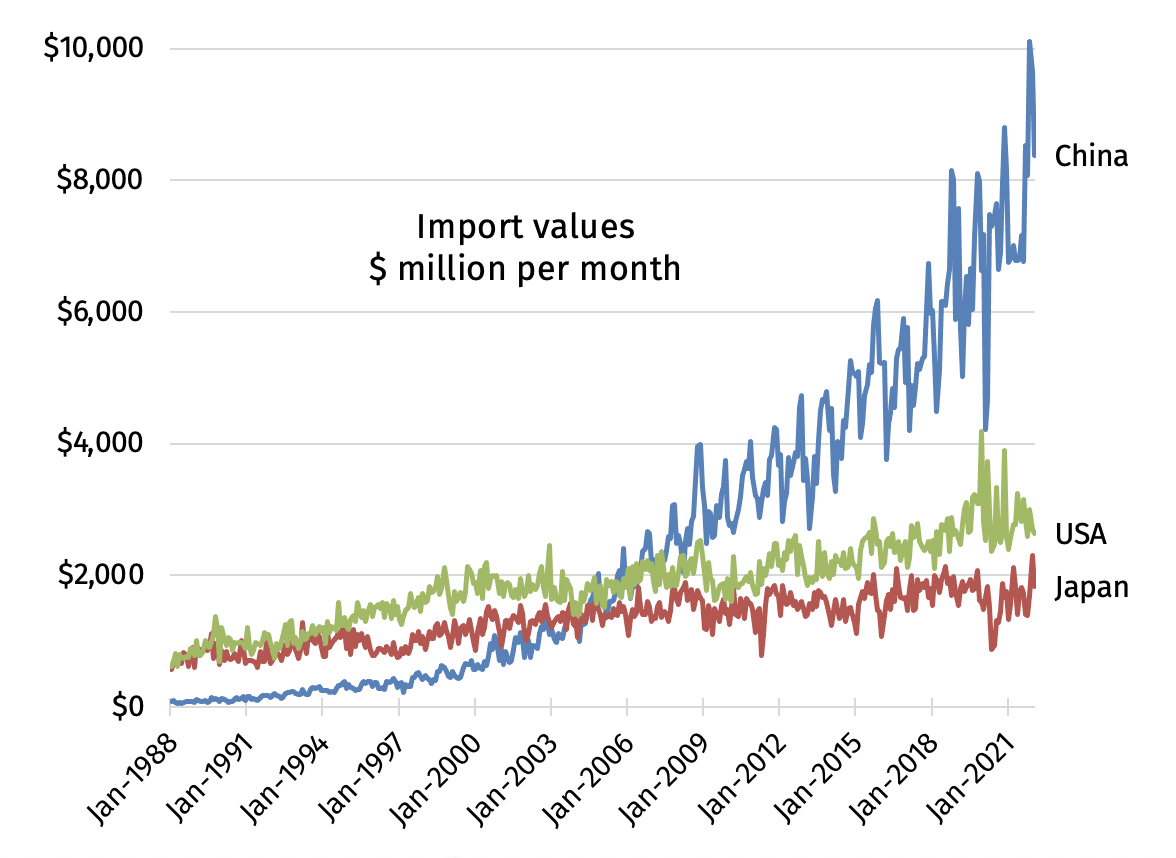
Does Australia need ships? Cargo ships? In 2022 we have just a dozen merchant vessels sailing under the Australian flag. These days the Australian red ensign is more associated with tinfoil-hat-wearing sovereign citizen protests than the merchant fleet it once adorned.
The decline in Australian-flagged vessels since the 1980s is severe, and comes as the number of ships operating under flags of convenience rises. We are talking about ships flagged in Panama, the Marshall Islands, Liberia and other places where they have no links other than their registration.

The idea Australia should have its own locally flagged shipping fleet is a long-term Labor idea. Bill Shorten endorsed it while he was Labor leader and Anthony Albanese has been full steam ahead since he took the helm.
So to see the theory pop up in the pages of The Australian the other day suggests perhaps it is an idea whose time has come. In support of the idea, The Australian extensively quoted Teresa Lloyd, head of Maritime Industry Australian Limited, as well as a former head of the Navy.
“Australian ownership and control of shipping capability is as essential to our national prosperity as Australian miners, farmers, and manufacturers,” Ms Lloyd has said previously.
Nationals Leader Barnaby Joyce has also supported the idea. “I think you need Australian-flagged ships to have full sovereignty,” he said in 2021 upon returning to the leadership of the National Party.
The role of supply chains has never been more visible, and more political. Any supply chains that were not disrupted by the pandemic are about to be ruined by the war in Ukraine. Petrol is perhaps the quickest and most visible commodity to rise in price but the increasing price of food in general and wheat in particular will hurt families more. If ever we were ready to take some action to secure supply, it is now. Even industry is leaning that way.
Lean is out
For the past several decades the pinnacle of supply chain management has been running “lean”. Making sure supply arrived only when it was needed was pioneered by the world’s recognised leader in manufacturing, Toyota. It works because it reduces the amount of money tied up in goods and of space needed to store them, and allows quality problems to be identified before vast numbers of dud goods have been delivered. The system Toyota invented is called Just-In-Time and its spread worldwide is one reason for the extremely low costs of manufactured goods these days.
But more recently, the importance of resilient supply chains has come to the fore. A supply chain stretched to almost-breaking point comes at a price — and that price is empty shelves when the unexpected happens. Toyota, for example, has delivered only half as many Landcruiser Wagons to Australia in 2022 compared to the same period last year. And that is not because they’re suddenly unpopular; it’s because they are hard to make when supplies are low.
So can the same argument apply to shipping? The low-cost approach is offshore shipping companies sailing ships flagged in Panama. Might a resilient approach involve locally flagged ships?
What are the precedents?
Switzerland for a long time was the world’s best example of a nation running a flag fleet for security reasons. The land-locked country set up its own fleet in World War II to guarantee supply lines. It retained the option to use that fleet for national purposes in case of war and subsidised it for over half a century. But in recent years, Switzerland has reduced fleet numbers sharply (from hundreds of ships to around 20) amid scandals, cost overruns and even a criminal investigation into the subsidy process.
Maersk Line, Limited is the American equivalent — a US subsidiary of the massive Danish shipping line, it sails US-flagged ships that are allowed under US law to carry US military items. You can bet Maersk would be willing to do the same for us. Becoming a defence contractor is far more lucrative than simply being a shipping company — you can really rip off your client, and Maersk has done so. It was fined many millions of dollars for a major over-charging scandal during the Iraq and Afghanistan wars. Nevertheless, shortly afterward it secured a new $2 billion contract with the US defence forces.
The Australian National Line is the Australian precedent. But the national shipping line was privatised in the Hawke-Keating era after making a run of losses.
These three shipping lines each show the tension of fighting market forces. You can and sometimes you must. But when you do, market discipline is eroded, losses can mount, and the subsidies you provide to compensate may provide opportunities for corruption.
The arguments around a national shipping line apply to keeping defence industry onshore too. When we make ships and ammunition in this country, we may increase their availability in times of crisis, but we often do so by sacrificing cost and quality, and must recognise that the industry itself will still have supply chains that reach across the world. A lack of inputs might bring our “local” manufacturing capacity to a halt.
Maritime Industry Australia Limited wants us to have 20 Australian flagged ships to start with. In the extreme case where we are at war, the Commonwealth would have the right to use those ships, and of course, any of those 20 ships might be taken or scuppered once they leave our waters. For the scheme to work, here’s what needs to happen: at every port at which an Australian-flagged ship calls, we need them not to seize, freeze or nationalise the ship and its cargo. But in extreme circumstances they might!
When would a national flag matter?
Having your own flagged fleet is a modest amount of insurance. It solves a narrow problem: a scenario where shipping is sufficiently disrupted enough that private ships won’t come to Australia, but not so disrupted that nationalised ships can’t make it.
In reality, any scenario where we need our own flagged fleet will be an extremely dangerous one for our flagged fleet to operate in. Frankly, any war where Chinese submarines have enough spare capacity to worry about merchant shipping bound for Australia instead of American aircraft carriers, British destroyers and French submarines is one where they have established global naval dominance or one where they’ve made a terrible mistake of stretching themselves too thin.
We are a vast continent, and if our enemies have the capacity to encircle us for any length of time they’ve become extremely powerful. Remember, our geography is our best defensive asset. No land border with Russia for us.
How much impact can China have on shipping?
China might be able to stop its own trade to Australia. It might also have the reach to make the tiny strip of sea between Sumatra and the Malaysian Peninsula unsafe, forcing ships to make enormous detours. But can it stop global shipping? There’s an absolutely enormous sea lane from the Americas and Europe to Australia that runs down the Atlantic Ocean, round the Cape of Good Hope and through the Southern Ocean. No choke points there. Submarines can bob hopefully in the roaring 40s, but there’s a lot of water down there and little chance they’ll cross paths with whatever is coming. Container ports on Australia’s southern side — Adelaide, Melbourne, Sydney — are far from waters China might hope to control.
It is one of our strategic advantages that Australia’s population and ports are located on the southern sides of the continent, further from countries that might be our foes.
What difference would a flag make?
The shipping flags of the world may be a grab-bag of tiny nations, but the biggest shipping lines are not. The three biggest shipping lines in the world are the Swiss-owned Mediterranean Shipping Company, Maersk of Denmark, and the French CMA CGM. These are allies or neutral nations.
Their ships run under a diversity of flags — some Danish, some from the tiny Marshall Islands, some under the flag of Liberia, etc. But the whole point of flags of convenience is that the nation which bestows the flag makes little demand on the ship after the initial payment. Even if China stops trading with us, those shipping lines will not be inclined to blacklist us. It is probably more important for securing our supply chains that we diversify imports away from China than us having locally flagged ships. Australia’s imports are not nearly so dependent as our exports, but China still dominates.

The current push to have our own flag fleet is a moderate amount of insurance at an uncertain cost. In an era when governments care a lot about the cost of living, it is highly unlikely they will adopt a policy that risks pushing up shipping costs. There is a big precedent for what is likely to happen next — in 1981 a major review of shipping called the Crawford Report recommended creating an Australian-flagged fleet. Its recommendations were never implemented.
Expect the same now. A better solution is some amount of local stockpiling and diversifying our import dependence.








Surely this is significant strategic matter – where are the Defence/Homeland Security talking heads? We spend billions on Nuclear Subs but what will they protect? We keep strategic supplies oil thousands of kilometres away on US soil – how will we get it here quickly in a world crisis.
The coalition is a hopeless, hapless lot who have got us into repeated failures on the battlefield and have failed to respond to global warming warnings – I don’t trust them to get us through ANY crisis but do trust they will continue to drag us INTO them,
I fully agree with you John. The Coalition have no idea of where they are going or when they will get there.The Nuclear subs are a prime example,first they cancel the French instead of converting to their Nuclear Subs and then to sign up to obtain Nuclear subs from either America or the UK for sometime in the 2040’s still without knowing who will supply the Subs!!!
Except the flag in your image is not the Australian Red Ensign. That’s the British Red Ensign, flown by British, not Austrailan, merchant ships.
Good afternoon Jason,
I read your article re an Australian flagged fleet with interest.
I worked for the Australian National line (ANL) as a marine engineer (first class, steam and motor) for twenty years.
In 1995, when Laury Brereton tried to sell off the ANL, I wrote a paper for our local member Marjory Henzell on the subject. (It should still be in Hansard somewhere)
It is obviously somewhat dated by now but still very relevant.
If you can send me your email contact I would like to send it to you.
Thank you for giving me your time,
John Homan
0408211734
johnhoman@bigpond.com
I know that Billy Hughes had his faults but he was a great advocate of an Australian shipping line and even after he ratted and joined the Tories he still tried to get a successful shipping line established.
Julia Gillard attempted to add to our own fleet with regulation of the foreign workforce re pay and conditions and I think condition of the foreign flagged vessels in Australian waters. I suspect that that has not progressed as charmers like Patrick and the government have opposed them.
Interesting read